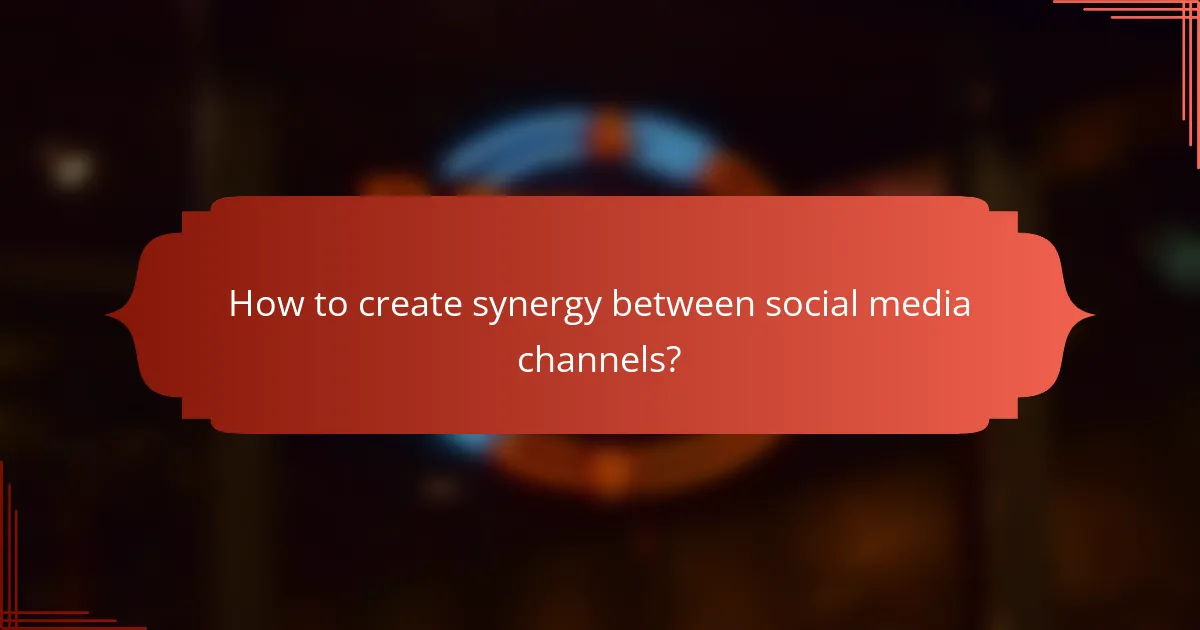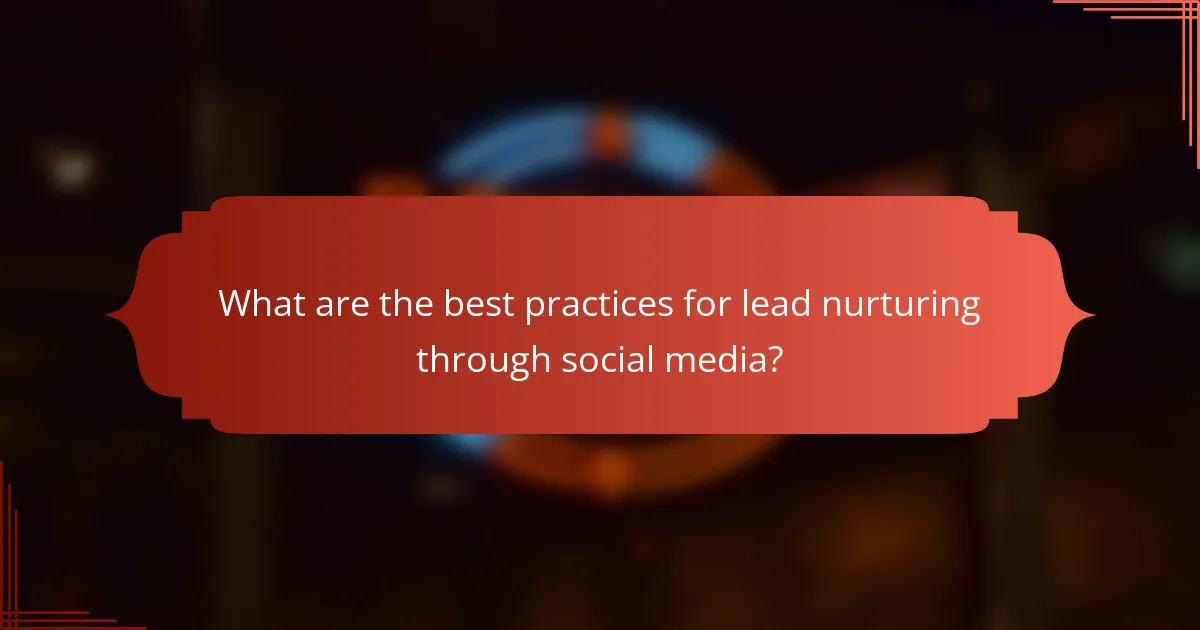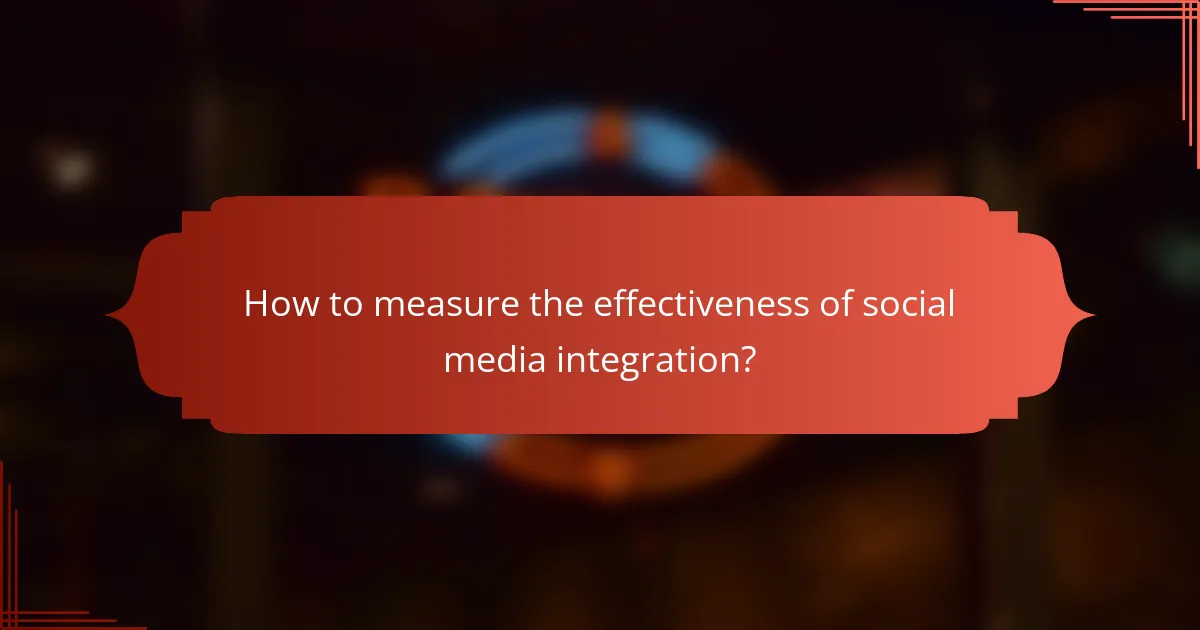Integrating social media into your marketing strategy is essential for aligning with business goals and enhancing lead nurturing efforts. By targeting the right audience and leveraging the unique advantages of platforms like LinkedIn, Instagram, and Facebook, brands can create a cohesive messaging strategy that maximizes engagement and conversion rates. This synergy not only boosts brand visibility but also ensures that social media efforts contribute meaningfully to overall business outcomes.

How to align social media strategy with business goals?
Aligning social media strategy with business goals involves defining specific objectives that support overall company aims, targeting the right audience, and measuring success effectively. This ensures that social media efforts contribute to broader business outcomes, enhancing both engagement and conversion rates.
Define clear objectives
Establishing clear objectives is crucial for aligning social media strategy with business goals. These objectives should be specific, measurable, achievable, relevant, and time-bound (SMART). For instance, a company might aim to increase brand awareness by 20% within six months through targeted social media campaigns.
Consider different types of objectives such as increasing website traffic, generating leads, or boosting sales. Each objective should directly relate to a business goal, ensuring that social media efforts are purposeful and directed.
Identify target audience
Identifying the target audience is essential for effective social media integration. Understanding demographics, interests, and online behaviors helps tailor content that resonates with potential customers. For example, a brand targeting millennials may focus on platforms like Instagram and TikTok, while a B2B company might prioritize LinkedIn.
Utilize tools like audience insights and analytics to gather data on who engages with your content. This information can guide content creation and advertising strategies, ensuring that messaging aligns with the preferences of the target audience.
Measure success metrics
Measuring success metrics is vital for evaluating the effectiveness of social media strategies. Key performance indicators (KPIs) such as engagement rates, conversion rates, and return on investment (ROI) provide insights into how well social media efforts align with business goals. Regularly tracking these metrics allows for timely adjustments to strategies.
Consider using analytics tools to monitor performance and generate reports. Establish benchmarks based on previous campaigns to assess progress and identify areas for improvement. This data-driven approach ensures that social media strategies remain aligned with evolving business objectives.

What are effective social media channels for lead generation in the UK?
In the UK, effective social media channels for lead generation include LinkedIn, Instagram, and Facebook. Each platform offers unique advantages tailored to different audiences and types of engagement.
LinkedIn for B2B engagement
LinkedIn is the premier platform for B2B engagement, making it ideal for businesses targeting professionals and decision-makers. It allows companies to share industry insights, connect with potential clients, and showcase their expertise through articles and posts.
To maximize lead generation on LinkedIn, focus on optimizing your company profile, participating in relevant groups, and using targeted ads. Regularly posting valuable content can increase visibility and establish authority in your field.
Instagram for visual storytelling
Instagram excels in visual storytelling, making it a powerful tool for brands that can create engaging images and videos. This platform is particularly effective for lifestyle, fashion, and creative industries, where visual appeal drives consumer interest.
Utilize Instagram Stories and Reels to share behind-the-scenes content, product launches, or customer testimonials. Engaging with followers through comments and direct messages can also nurture leads and build relationships.
Facebook for community building
Facebook is effective for community building, allowing brands to create groups and foster discussions around shared interests. This platform is suitable for businesses looking to engage with customers on a more personal level and build brand loyalty.
To leverage Facebook for lead generation, consider creating a dedicated group for your niche, hosting live Q&A sessions, and sharing user-generated content. Regular interaction and valuable content can help maintain an active and engaged community.

How to create synergy between social media channels?
Creating synergy between social media channels involves aligning messaging and strategies across platforms to enhance brand visibility and engagement. This approach ensures that content resonates with audiences consistently, maximizing reach and effectiveness.
Cross-promote content
Cross-promotion involves sharing content across different social media platforms to leverage each channel’s unique audience. For example, a video posted on YouTube can be shared on Facebook and Instagram to drive traffic back to the original source, increasing views and engagement.
When cross-promoting, tailor the message to fit the platform’s style and audience preferences. Use platform-specific features, such as Instagram Stories or Twitter threads, to enhance visibility and interaction.
Utilize unified branding
Unified branding ensures that your visual identity, tone, and messaging are consistent across all social media channels. This creates a cohesive experience for users, making it easier for them to recognize and connect with your brand.
To achieve unified branding, develop a style guide that outlines your logo usage, color palette, typography, and voice. Regularly review your profiles to ensure they reflect this guide, adjusting as necessary to maintain consistency.
Implement integrated campaigns
Integrated campaigns combine efforts across multiple social media channels to promote a single message or goal. This strategy can amplify your reach and reinforce your message through various touchpoints.
For effective integrated campaigns, create a clear plan that outlines objectives, target audiences, and key messages for each channel. Utilize tools like content calendars to coordinate posts and ensure timely execution across platforms.

What are the best practices for lead nurturing through social media?
Effective lead nurturing through social media involves building relationships with potential customers by providing personalized, timely, and relevant communication. By leveraging various strategies, businesses can enhance engagement and guide leads through the sales funnel.
Personalize communication
Personalizing communication is crucial for effective lead nurturing. Tailoring messages to individual preferences and behaviors can significantly increase engagement rates. Use the recipient’s name and reference their past interactions or interests to create a more meaningful connection.
Consider segmenting your audience based on demographics or behaviors to deliver targeted content. For example, if a lead has shown interest in a specific product, share relevant articles or promotions that align with their interests.
Engage with timely responses
Responding promptly to inquiries or comments on social media can greatly enhance lead nurturing efforts. Timely responses show that you value your audience’s input and are attentive to their needs. Aim to reply within a few hours, if possible, to maintain engagement.
Utilize notifications and monitoring tools to stay updated on interactions. This proactive approach allows you to address questions or concerns quickly, fostering trust and encouraging leads to move further along the sales process.
Utilize automated messaging tools
Automated messaging tools can streamline your lead nurturing efforts by providing instant responses to common inquiries. These tools can help manage high volumes of interactions without sacrificing personalization. Consider using chatbots for initial engagement while ensuring that human support is available for more complex queries.
When implementing automation, ensure that the messaging aligns with your brand voice and offers value. Regularly review automated responses to keep them relevant and effective, adjusting based on feedback and engagement metrics.

What frameworks exist for evaluating social media integration?
Several frameworks can help evaluate social media integration, focusing on strategic alignment, channel synergy, and lead nurturing. These frameworks provide structured approaches to assess how well social media efforts align with overall business goals and customer engagement strategies.
SWOT analysis for social media
A SWOT analysis evaluates the strengths, weaknesses, opportunities, and threats related to social media integration. This framework helps identify internal capabilities and external factors that can impact social media effectiveness.
For example, strengths may include a strong brand presence on platforms like Facebook or Instagram, while weaknesses could involve limited engagement or outdated content. Opportunities might arise from emerging platforms or trends, whereas threats could include negative public perception or increased competition.
To conduct a SWOT analysis, gather a team to brainstorm each category, ensuring a comprehensive view of your social media landscape. This analysis can guide strategic decisions and highlight areas for improvement.
Customer journey mapping
Customer journey mapping visualizes the steps a customer takes from awareness to purchase, incorporating social media touchpoints. This framework helps businesses understand how social media influences customer decisions and interactions.
When mapping the customer journey, identify key stages such as awareness, consideration, and decision. For instance, social media may play a significant role in the awareness stage through targeted ads or engaging content, while reviews and testimonials can influence the decision stage.
Utilize tools like flowcharts or diagrams to illustrate the journey, ensuring to highlight social media interactions at each stage. Regularly update the map based on customer feedback and analytics to keep it relevant and effective.

How to measure the effectiveness of social media integration?
Measuring the effectiveness of social media integration involves assessing various metrics that reflect how well your social media channels align with your overall marketing strategy. Key performance indicators (KPIs) such as conversion rates, engagement metrics, and audience growth provide insights into the success of your social media efforts.
Track conversion rates
Conversion rates indicate how effectively your social media channels drive desired actions, such as purchases or sign-ups. To measure this, track the number of conversions originating from social media traffic compared to total visits. A conversion rate of 1-3% is typical for many industries, but this can vary significantly based on your specific goals and audience.
Utilize tools like Google Analytics to set up conversion tracking. Ensure you define clear goals, such as form submissions or product purchases, to accurately assess the impact of your social media campaigns on conversions.
Analyze engagement metrics
Engagement metrics, including likes, shares, comments, and click-through rates, reveal how your audience interacts with your content. High engagement rates often correlate with effective social media strategies, indicating that your content resonates with your audience. Aim for engagement rates of 1-5% as a benchmark, depending on the platform.
Regularly review these metrics to identify trends and adjust your content strategy accordingly. For instance, if video posts receive significantly more engagement than images, consider increasing your video content production.
Monitor audience growth
Audience growth measures the increase in followers or subscribers across your social media platforms. A steady growth rate of 5-10% per month is generally a positive sign, indicating that your social media integration is attracting new potential leads. Track this growth over time to identify successful campaigns or content types.
Use analytics tools provided by social media platforms to monitor follower growth. Pay attention to spikes in growth that may correlate with specific posts or promotions, and leverage these insights to refine your outreach strategies.
